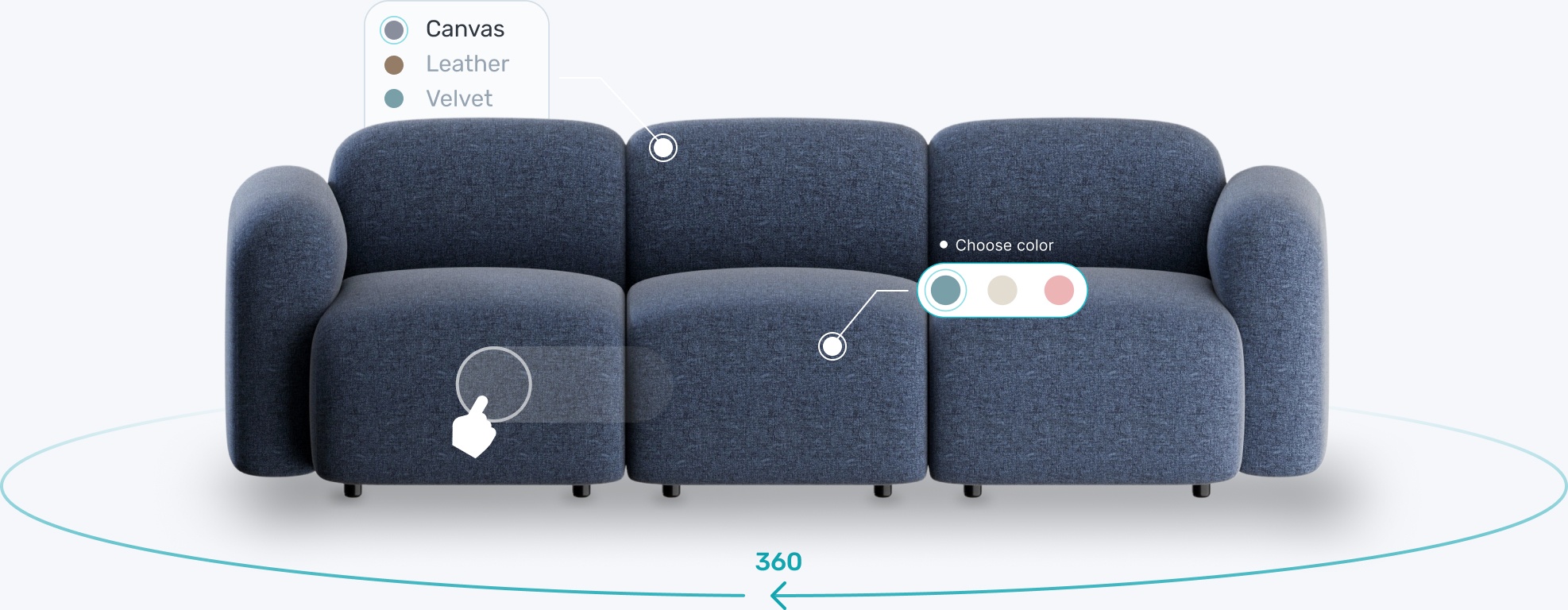Transform your eCommerce strategy with 3D & AR





Customer demands for product visuals are higher than ever. More customers are shopping online and looking for the same level of information and interaction as they would get from an in-store experience. Yet, high-quality product visuals can be expensive, and many companies simply don’t have the budget or time it takes to organize elaborate photoshoots for every product.
In the lighting business for over 60 years, Crystorama’s success comes down to a deep understanding of their customer’s needs. And after discovering how much time and money they could save with 3D virtual photography - as one 3D artist is able to do the work of a whole team of photographers and stylists - Crystorama realized that in order to keep up, they would need to make the switch.
[#gal1]
Founded in 1958 in Brooklyn, New York, the family-owned Crystorama company started out as an importer of high-end crystal chandeliers before evolving into the modern, global lighting business you see today.
Crystorama chandeliers are works of art, made using the finest quality crystals and even selected to light up several prestigious institutions, such as the US Supreme Court, Constitution Hall, and the Palace Theatre.
Balancing timelessness with modern designs, Crystorama’s brand and product visuals have also evolved over time. After seeing the rise of 3D in their industry and looking to embrace the latest trends and technological possibilities, the company decided it was time to consider using 3D virtual photography.
As Brad Kleinberg, President of Crystorama notes, “Styles change. Trends come and go. But in seven decades, our core business at Crystorama has never changed.”

For a company like Crystorama, inspirational product imagery is an essential part of its marketing strategy. In addition to simple product shots, their customers expect to see lifestyle scenes that inspire and showcase what their lighting could look like in various environments.
Crystorama had already noticed many of its competitors switching to 3D product imagery and obtaining a competitive edge as a result. The pandemic only reinforced this trend. Online shopping has risen in popularity and prominence. And 3D visualization is a much more sustainable way to keep up with the demand.
We think the role of these technologies is extremely important for online shoppers, especially since the pandemic. We’ve definitely seen strong growth in demand for product visualization, where it’s become more important now than ever to have a fast yet smooth process to deliver them.”
Christina Cicalese | National Accounts Manager, Crystorama.
But with traditional photography, every new product or campaign requires a new photoshoot. Up until recently, Crystorama was outsourcing all their product imagery to photographers in China in order to keep down costs. And as a consequence, their marketing team became reliant on others to deliver the lifestyle images they needed.

For a lighting company that sells lamps, beautiful designs are the product. But it’s also more than that. The light they give is equally important, and that can be harder to capture with photography, which is all about natural light. With 3D, artificial light can be tweaked and set according to the required mood, which, you could say is a natural fit for a lighting company.
After reaching out to Modelry, they defined a list of their bestselling products for which they had no lifestyle imagery available and converted these into 3D models. In order to create a lifestyle scene, there are two options: select a ready-made scene from the catalog, or request a custom scene. Crystorama chose a mix of both, requesting a few adjustments to the catalog scenes, in addition to a couple of custom scenes made using a mood board.
One of the instant benefits of using 3D models and lifestyle scenes is their reusability. All the items in a scene can be easily adjusted and moved around, the lighting can be dimmed or increased, and products can be swapped in and out of scenes. For example, you can re-use the same bathroom scene to show different products, swapping a ceiling light for a wall lamp, and adding a mirror or changing the wall color to make the same room look like two very different scenes.
Since concluding their first 3D project with Modelry, Crystorama is discovering how much more efficient it is to work with 3D compared to the expensive photography they used to outsource. Not only does it eliminate the need for product shipping and multiple stakeholders, but it also puts the creative control back in the hands of the marketing team.
Once a model or scene is requested, the full process of getting a price quote to approving the final look is handled within the Modelry platform. And every asset goes through quality assurance, allowing the marketing person, for example, to be in control of requesting adjustments and making sure everything is on-brand.

Crystorama has now seen firsthand a number of benefits of working with 3D for product visualization. As Christina Cicalese explains, “Having 3D imagery helps to make the customer feel more comfortable to purchase the item online.” Other benefits they noted include:
The next step for Crystorama will be to measure the impact. Companies that implement 3D and augmented reality (AR) should quickly see increases in important KPIs. Everything from boosted conversion rates and time spent on-page to drastic falls in return rates.
And measuring this impact is crucial to making the business case for further investment. Especially in eCommerce, where the quality of product visuals and seamlessness of an online shopping experience can be the difference between a sale or an abandoned cart.
Are you considering making the switch to 3D and AR? Schedule a free demo with one of our 3D experts to explore the possibilities for your business.




